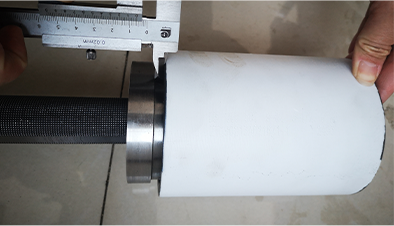- Afrikaans
- Albanian
- Amharic
- Arabic
- Armenian
- Azerbaijani
- Basque
- Belarusian
- Bengali
- Bosnian
- Bulgarian
- Catalan
- Cebuano
- Corsican
- Croatian
- Czech
- Danish
- Dutch
- English
- Esperanto
- Estonian
- Finnish
- French
- Frisian
- Galician
- Georgian
- German
- Greek
- Gujarati
- Haitian Creole
- hausa
- hawaiian
- Hebrew
- Hindi
- Miao
- Hungarian
- Icelandic
- igbo
- Indonesian
- irish
- Italian
- Japanese
- Javanese
- Kannada
- kazakh
- Khmer
- Rwandese
- Korean
- Kurdish
- Kyrgyz
- Lao
- Latin
- Latvian
- Lithuanian
- Luxembourgish
- Macedonian
- Malgashi
- Malay
- Malayalam
- Maltese
- Maori
- Marathi
- Mongolian
- Myanmar
- Nepali
- Norwegian
- Norwegian
- Occitan
- Pashto
- Persian
- Polish
- Portuguese
- Punjabi
- Romanian
- Russian
- Samoan
- Scottish Gaelic
- Serbian
- Sesotho
- Shona
- Sindhi
- Sinhala
- Slovak
- Slovenian
- Somali
- Spanish
- Sundanese
- Swahili
- Swedish
- Tagalog
- Tajik
- Tamil
- Tatar
- Telugu
- Thai
- Turkish
- Turkmen
- Ukrainian
- Urdu
- Uighur
- Uzbek
- Vietnamese
- Welsh
- Bantu
- Yiddish
- Yoruba
- Zulu
Understanding the Key Distinctions Between Casing and Tubing in Oil and Gas Operations
The Differences Between Casing and Tubing in Oil and Gas Operations
In the realm of oil and gas extraction, two crucial components that play a vital role in the success of drilling operations are casing and tubing. Although they may appear similar and serve somewhat related purposes, the differences between the two are significant enough to warrant a detailed exploration. Understanding these differences is fundamental for professionals in the industry, as well as for anyone interested in the mechanics of oil and gas drilling.
Casing refers to the steel pipe that is installed in the drilled wellbore to stabilize the well structure and prevent the surrounding soil and rock from collapsing. Once the well is drilled to the desired depth, casing is placed into the well and subsequently cemented in place. This process secures the wellbore and creates a barrier that protects groundwater resources by isolating them from the hydrocarbons being extracted. Casing is essential for safety and regulatory compliance, as it helps prevent blowouts and uncontrolled leakage of fluids from the well.
On the other hand, tubing is a smaller-diameter pipe that is inserted inside the casing after the well has been completed and is ready for production. Tubing serves as the conduit through which the oil and gas flow to the surface, allowing for controlled extraction of hydrocarbons. Unlike casing, which is permanently installed and typically remains in the well even after the completion of production, tubing can be removed and replaced as needed. This flexibility is crucial, as it allows operators to maintain optimal production levels and manage the wear and tear that occurs over time.
One of the primary differences between casing and tubing is their function. Casing is primarily structural; its main purpose is to provide strength and stability to the wellbore, ensuring that it can withstand external pressures and prevent pollution. Tubing, in contrast, is operational; it is integral to the production process, facilitating the flow of hydrocarbons from the reservoir to the surface.
what are the differences between casing and tubing?

Another key difference lies in their design specifications. Casing is typically thicker and more robust than tubing because it must endure greater stresses due to the external pressure of surrounding geological formations. This thicker design helps it remain intact under various geological conditions. Tubing, while still strong, is designed to handle the pressures of the fluids it transports, which can vary from well to well. Consequently, the material standards and thickness for tubing are less stringent than for casing.
In terms of installation, the processes also differ. Casing is installed during the drilling process and is cemented in place, creating a permanent environment for the well. Tubing, however, is a subsequent step that occurs after the well has been completed and is typically a more straightforward installation process. Tubing is often run into the well using a wireline or similar equipment.
Economically, the costs associated with casing and tubing also differ. Casing tends to be more expensive due to its size and the materials required for its construction. Tubing, while still representing a significant investment, is generally less costly per foot, given its narrower diameter and less severe structural requirements.
In conclusion, while casing and tubing are both essential components of oil and gas drilling, their functions, designs, installation processes, and cost implications differ significantly. Understanding these distinctions is crucial for industry professionals working to optimize extraction processes and maintain safety standards in oil and gas operations. As technology continues to evolve, the roles of casing and tubing may also change, but their fundamental differences will always be a cornerstone of drilling methodology.
-
Tubing Pup Joints: Essential Components for Oil and Gas OperationsNewsJul.10,2025
-
Pup Joints: Essential Components for Reliable Drilling OperationsNewsJul.10,2025
-
Pipe Couplings: Connecting Your World EfficientlyNewsJul.10,2025
-
Mastering Oilfield Operations with Quality Tubing and CasingNewsJul.10,2025
-
High-Quality Casing Couplings for Every NeedNewsJul.10,2025
-
Boost Your Drilling Efficiency with Premium Crossover Tools & Seating NipplesNewsJul.10,2025







